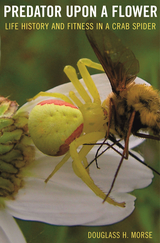
Warblers inevitably make an appearance on every naturalist's list of favorite birds. Called by Roger Tory Peterson the “butterflies of the bird world,” these active, colorful birds have long enchanted amateur and professional ornithologists alike. Yet despite this widespread appeal, no comprehensive book on this richly varied family of birds has been published in over thirty years.
Douglass Morse, a prominent avian ecologist, brings together in this book an up to date account of three decades of research and debate on the ecological and behavioral aspects of the Parulinae—the “New World” or “American” warblers. Beginning with a brief overview of their evolutionary history and their dispersal through North and South America, he documents the life cycle of the birds on both their breeding grounds and their migration routes, which extend from Central America to Canada. Foraging, habitat selection, mating, reproduction, plumage, rare and tropical species, and diversity are just a few of the many subjects covered in this broad synthesis.
More than a comprehensive look at the natural history of the warbler, American Warblers illustrates how this abundant subfamily of birds may be used to make and test conceptual advances in ecology. For example, in parts of eastern North America, the warblers' density exceeds that of all other birds combined. Yet despite this, they manage to coexist harmoniously with several similar species, a fact that appears to contradict basic ecological principles. Morse argues that warbler populations are excellent candidates for the experiments needed to resolve issues of this sort.
Amply illustrated with more than 60 drawings and charts, American Warblers will be an invaluable addition to the personal libraries of ornithologists and bird fanciers at all levels of expertise. Ecologists, ethologists, and evolutionists will likewise find much here to enrich and challenge their perspectives on competition and speciation.

This readable text represents a much needed synthesis of ecological insight into animal behavior. The field of behavioral ecology is relatively new, having evolved from a combination of classical ethology, as developed by Lorenz and Tinbergen, and population ecology. Now for the first time, a single author integrates the vast literature on animal ecology and behavior into a conceptual whole.
Exploring the theme of resource acquisitions, Douglass H. Morse combines the comparative approach to biology with models based on evolutionary theory. Secondary consequences of sexual selection and other selective pressures are considered in detail. Discussion of interspecific interactions and constraints is especially rich, as is the treatment of foraging theory, kinship theory, habitat selection and predator avoidance. Perhaps the book’s greatest achievement, however, is its unparalleled ecological and evolutionary analysis of individual differences.
Behavioral Mechanisms in Ecology will meet the teaching and reference needs of an extremely broad audience of professional biologists.

READERS
Browse our collection.
PUBLISHERS
See BiblioVault's publisher services.
STUDENT SERVICES
Files for college accessibility offices.
UChicago Accessibility Resources
home | accessibility | search | about | contact us
BiblioVault ® 2001 - 2024
The University of Chicago Press









